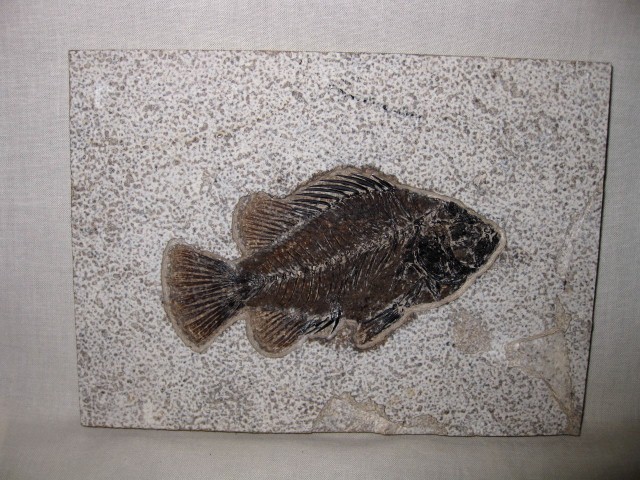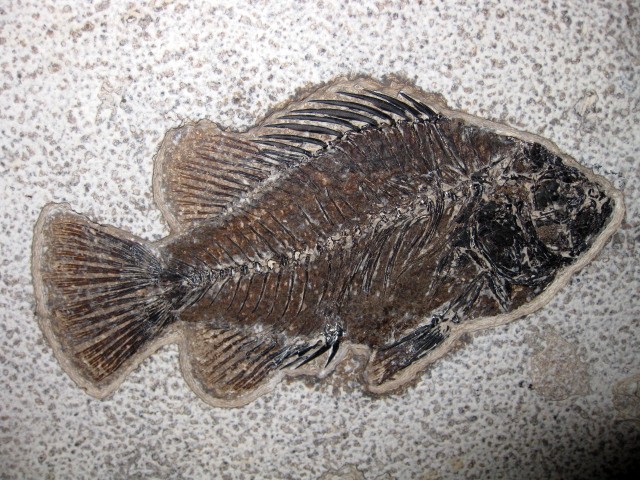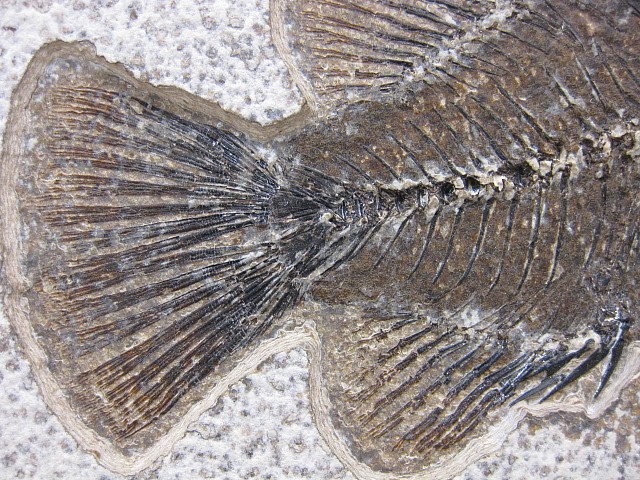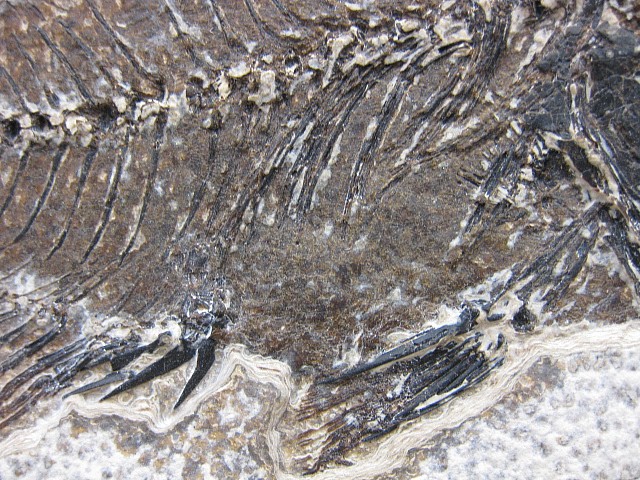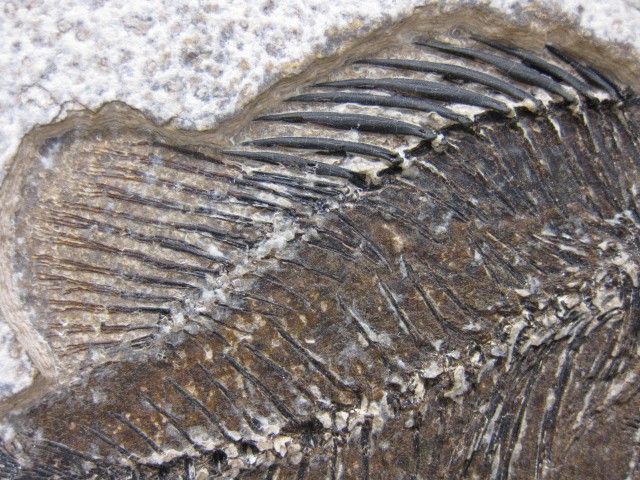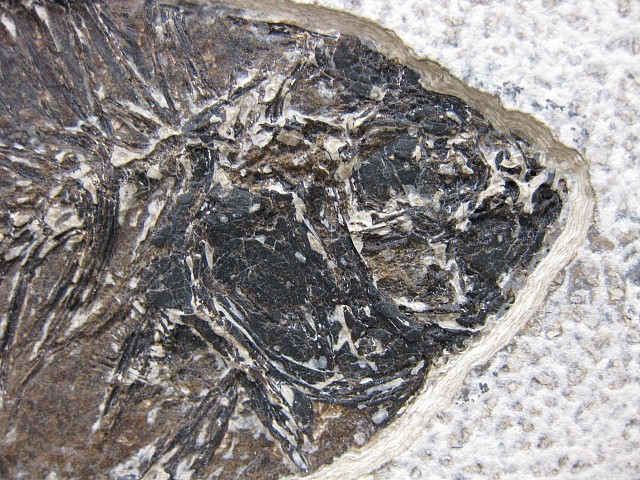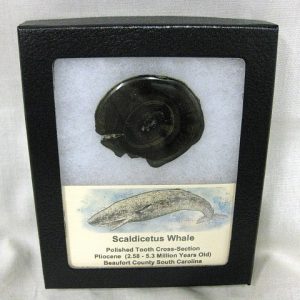Description
- Cockerellites liops (Formerly Priscacara liops)
- Eocene Age
- Green River Formation
- 18″ Layer
- Fossil Lake, Wyoming
- This specimen measures approx. 4 15/16″ long and the overall size of the plate is approx. 5 5/8″ x 7 3/4″. This specimen comes from the 18″ Layer
Priscacara is an extinct genus of perch from the middle Eocene. It is characterized by a sunfish-like body and its stout dorsal and anal spines. The fish is best known from the Green River Shales of Wyoming, Utah and Colorado. Mass deaths of Priscacara suggest it formed schools..
Within the Green River Formation of southwest Wyoming in the area known as Fossil Lake, two distinct zones of very fine-grained lime muds are particularly noted for preserving a variety of complete and detailed fossils. These layers are an Eocene Lagerstätte, a rare place where conditions were right for a rich accumulation of undisturbed fossils. The most productive zone—called the split fish layer—consists of a series of laminated or varved lime muds about 6 ft (1.8 m) thick, which contains abundant fish and other fossils. These are easily split along the layers to reveal the fossils. This thin zone represents some 4000 years of deposition. The second fossil zone, the 18 inch layer, is an unlaminated layer about 18 in (46 cm) thick that also contains abundant detailed fossils, but is harder to work because it is not composed of fissile laminae.
The Green River Formation is an Eocene geologic formation that records the sedimentation in a group of intermountain lakes in three basins along the present-day Green River in Colorado, Wyoming, and Utah. The sediments are deposited in very fine layers, a dark layer during the growing season and a light-hue inorganic layer in the dry season. Each pair of layers is called a varve and represents one year. The sediments of the Green River Formation present a continuous record of six million years. The mean thickness of a varve here is 0.18 mm, with a minimum thickness of 0.014 mm and maximum of 9.8 mm.
The sedimentary layers were formed in a large area named for the Green River, a tributary of the Colorado River. The three separate basins lie around the Uinta Mountains of northeastern Utah: an area in northwestern Colorado east of the Uintas a larger area in the southwest corner of Wyoming just north of the Uintas known as Lake Gosiute the largest area, in northeastern Utah and western Colorado south of the Uintas, known as Lake Uinta Fossil Butte National Monument in Lincoln County, Wyoming is in a part of the formation known as Fossil Lake because of its abundance of exceptionally well preserved fish fossils.

